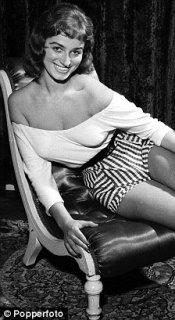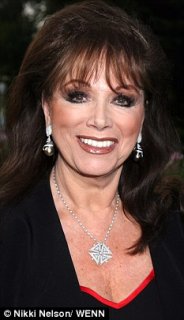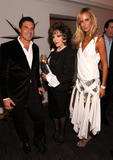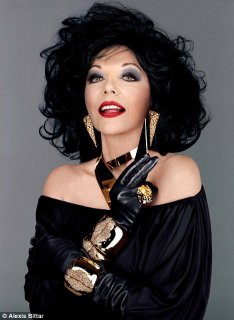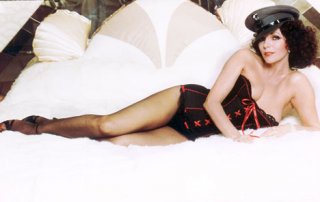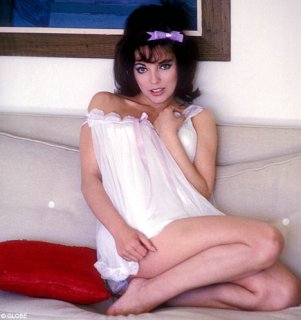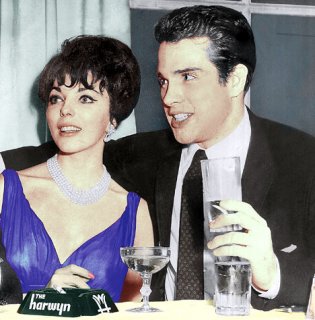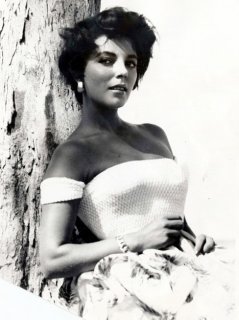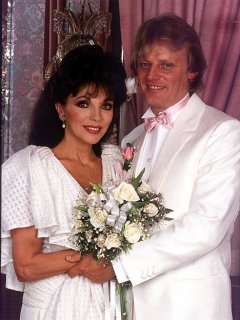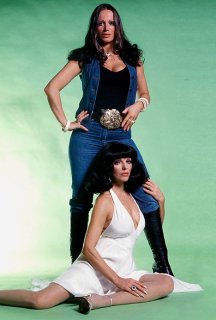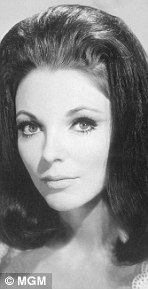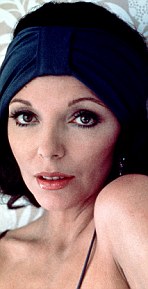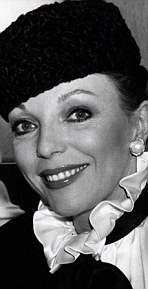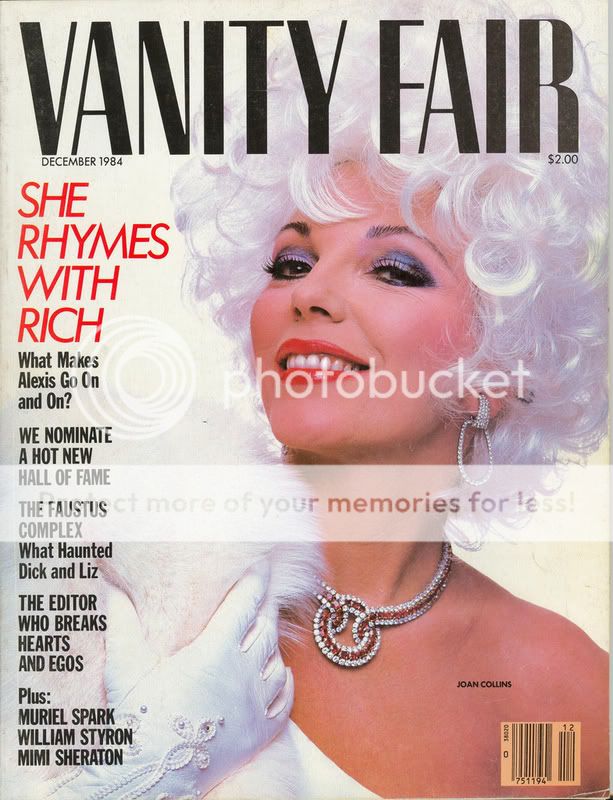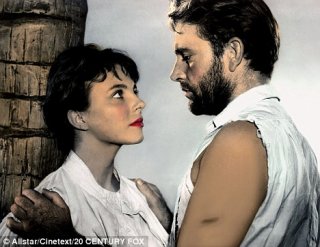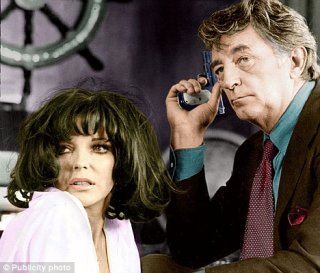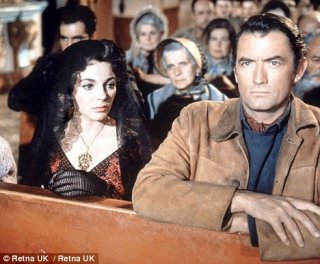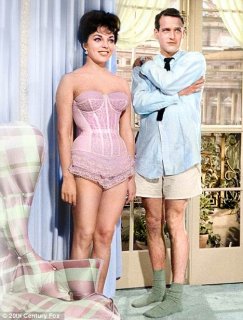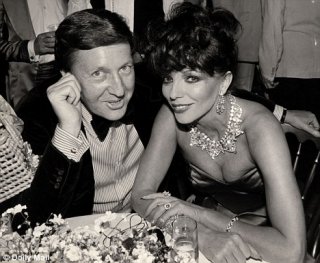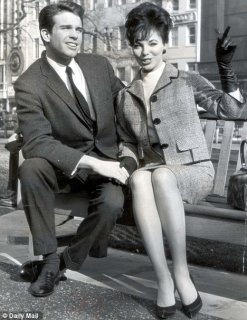tigerrouge
Well-Known Member
- Joined
- Feb 25, 2005
- Messages
- 18,925
- Reaction score
- 9,822
Joan Collins gets tough on celebrities (dailymail.co.uk

The rise of the sub-lebrity: The non-entities of the Noughties awards
29th December 2009
JOAN COLLINS laments the decade when nonentities - not fit to kiss the feet of icons like Elizabeth Taylor - were hailed as stars.
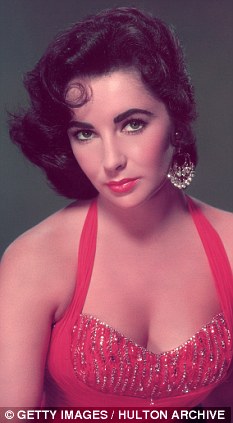
Genuine talent: Elizabeth Taylor, pictured in 1953, was a 'real' celebrity
Just what has happened to real celebrity? I don't mean the 'sub-lebrity' we have today.
These modern 'celebs' who seem to possess little talent, strip off to flash their knickers at the drop of a flashbulb or become famous (or try to) by dating someone famous, preferably a footballer. This type of paper fame soon evaporates and, within a relatively short time, many of them go from the glitter to the gutter.
I mean the real celebrities; the ones, like Ava Gardner, Clark Gable, Rita Hayworth and Ingrid Bergman, who were incredible actors with incredible talents and true star power. Because, in this world of the sub-lebrity, they do not exist today - and I'll tell you why.
The nouveau celebrity rot seemed to start at the beginning of the decade with the arrival of the new 'entertainments' of reality television (Big Brother, I'm A Celebrity...., Wife Swap, X Factor, Strictly Come Dancing and so on), to feed the appetites of a public eager to watch heartbreak, adultery, torture and hatred served up to them daily and nightly on their omnipresent boxes.
And, as a result, utter nobodies became instant celebrities, often garnering front pages in the tabloids and covers on magazines - and these wannabes demeaned themselves by eating animal intestines or marrying someone the public voted for or seriously injuring themselves attempting to dance. Their instant fame had absolutely nothing to do with dedication to a craft, talent or even hard work. Instead, it was: 'Look at me, I'm famous' - and that's all they wanted.
Devoid of talent, beauty or charm, in order to stay in the public eye, they have had to rely on self-serving antics. And, of course, every headline-grabbing time, the antics have become more and more bizarre and outrageous. So we have had Britney Spears publicly shaving her head (as she had a very public breakdown) and causing paparazzi chaos whenever she ventured out of her house; various celebrities dieting themselves down to skeletal proportions, yet insisting they don't have an eating disorder; bipolar former pop star Kerry Katona having liposuction simply to get publicity in a magazine article; and the ever-present Jordan - aka Katie Price - who seems to love a headline more than her children.
Whether I'm in England or America - I divide my time between the two - I can't escape them. The latest show to air on British TV is a programme called Jon And Kate Plus 8. It's already a huge hit in the U.S. and 'stars' Kate and Jon Gosselin. Right now, they're the biggest 'A-listers' in the U.S.
Never heard of 'em? No, neither had I until recently. They are an extremely surly, charmless, unattractive couple who had eight children, made a reality show about their family and then separated. But for some weird reason the American - and now British - public has taken them to heart and they now appear on the celebrity magazine covers constantly, as well as many of the nightly entertainment shows.
And they've done nothing, said nothing and, in fact, are utterly without any appealing characteristics. They're loathsome and dislikeable.
All of this begs the question: what has happened to the true celebrity? Where are the Marilyn Monroes, the Elizabeth Taylors, the Richard Burtons and the Jackie Kennedy Onassises?
Today, the magazines and entertainment shows are populated with people who don't have much talent, but loads of chutzpah and who are managing to crawl up the ladder of populist celebdom by fair means or foul.
The X Factor is a brilliant case in point. The more gruesome, raucous and appalling the act in the early auditions, the more everyone seems to love it.
Simon Cowell nicknamed John and Edward Grimes (or Jedward) 'those vile twins' - and rightfully accused them of being talentless, little swaggering exhibitionists. Yet the public loved them, Simon had to listen and they soared in mind-boggling popularity and got through to the final six acts.
Then there is Jordan. There were other glamour models - Jodie Marsh and Melinda Messenger - but Jordan triumphed and her career is a phenomenon, embracing all aspects of her multiple vocations (topless modelling, chat show host, entrepreneur, children's author and so on). But she pays someone else to write her books and basks in all the tabloid attention, while wailing to be left alone or 'get closure' over her divorce as she eats bugs in the jungle on I'm A Celeb. . .
The most depressing consequence of our obsession with 'sub-lebrities' is that the real stars - the actors who are attempting to craft a career from talent and long years of training - are being left on the breadline as the airwaves are clogged with reality shows.
But their TV bosses know it's cheaper to make a reality show with unknowns who might become famous (or wannabes and glamour models desperate for those 15 minutes of fame) than to produce sitcoms or dramas in which they would have to pay professionals.
So today's minor celebrities - lacking any true discernable talent to maintain their fame and desperate for as much attention as possible - need to behave ever more outrageously to garner headlines. Every day the news is full of some starlet or wannabe singer falling down drunk or dressing like a bag lady in expensive rags.
But the saddest part about our obsession with sub-lebrities is that so many young girls strive to emulate them. If Britney falls down and is sick in the gutter, then too many young girls seem to think that if it's OK for her, it's OK for them, too.
Ever since the dawn of movies, the young have copied their stars and idols. In the Thirties, Forties and Fifties the studios were strict about how their talent behaved, as the studios rightly believed they were role models for the young. Hence the stars behaved impeccably when the spotlight was on them and although they might misbehave (and often did), it was well behind closed doors.
The studio publicists kept all naughty shenanigans out of the papers and the media, by and large, went along with it. Although everyone knew about JFK's philandering, Loretta Young's out-of-wedlock baby with Clark Gable and Rock Hudson's homosexuality, not a whisper appeared in the Press.
The true stars of the Forties, Fifties and Sixties were larger than life and incredibly charismatic and glamorous. I was lucky enough to meet some of them as a young actress arriving in Hollywood at the end of the Golden Age, when sadly the gilt was beginning to tarnish. TV was taking over and the studios were rarely signing new actors.
I was put under contract around the same time as Kim Novak, Shirley MacLaine and Jayne Mansfield, and we all had to conform to the groomed and glamorous appearance demanded by our respective studios. I was severely castigated when I once appeared at lunch in jeans and without make-up.
One of the great stars I met was Elizabeth Taylor, then just married to her third husband, film producer Michael Todd. Not only was she a true beauty, she was also down to earth and fun. She'd been a movie star since the age of seven and knew how to behave like one.
We dined at a restaurant on Sunset Strip called La Rue and she was dressed to the nines (as was I) in satin, mink stole and diamonds. I'd admired her since childhood. She deserved the accolades for her beauty, sheer star power and the epic quality of her lifestyle.
Then I met Ava Gardner - dangerously gorgeous and a headline-making superstar who often downgraded herself by saying she couldn't act. Well, she could. She had true talent and that indispensable star power.
The public was more savvy then. Actors didn't become stars unless they truly had the real X factor. There were loads of Marlene Dietrich or Hedy Lamarr wannabes, but the real versions made it because they were truly exceptional in every way.
Of course, the ultimate celebrity of all time is still Marilyn Monroe. In the 47 years since her death, hundreds of books have been written about her and her beauty still looks modern. I wonder how many of today's sub-lebrities would ever achieve that degree of longterm fame and adulation?
True celebrity is not just a passing fad. True celebrities' images won't fade - unlike those of the sorry crop of nobodies who passed for 'stars' in the Noughties.

